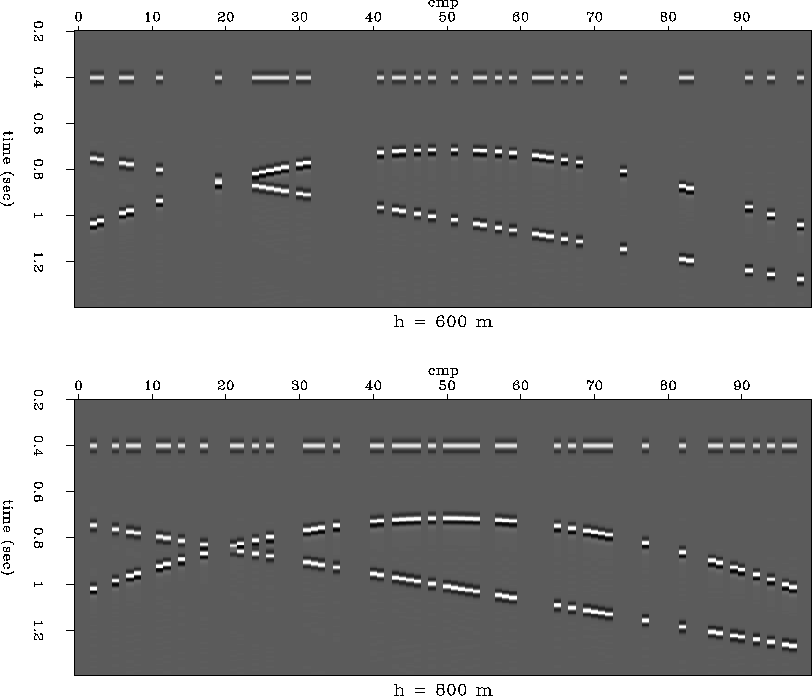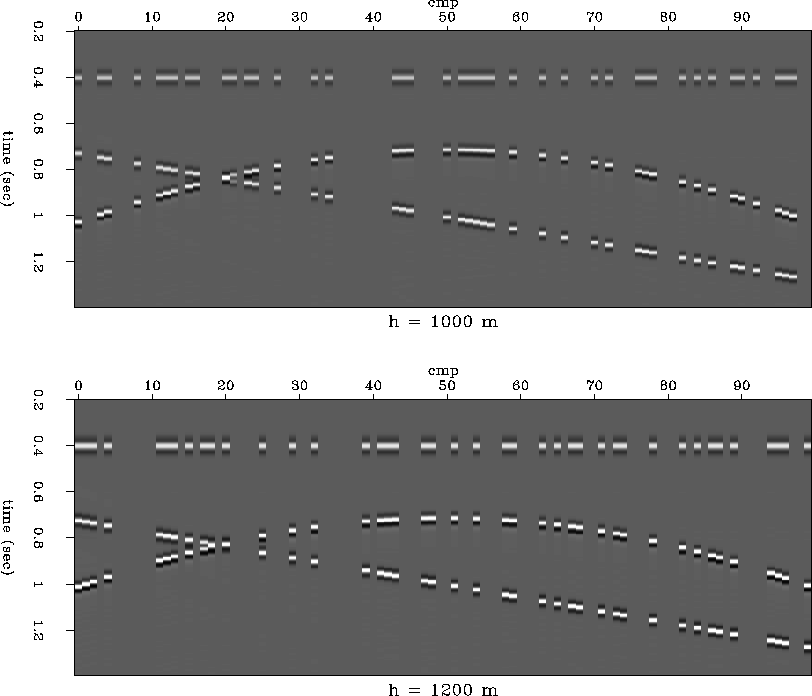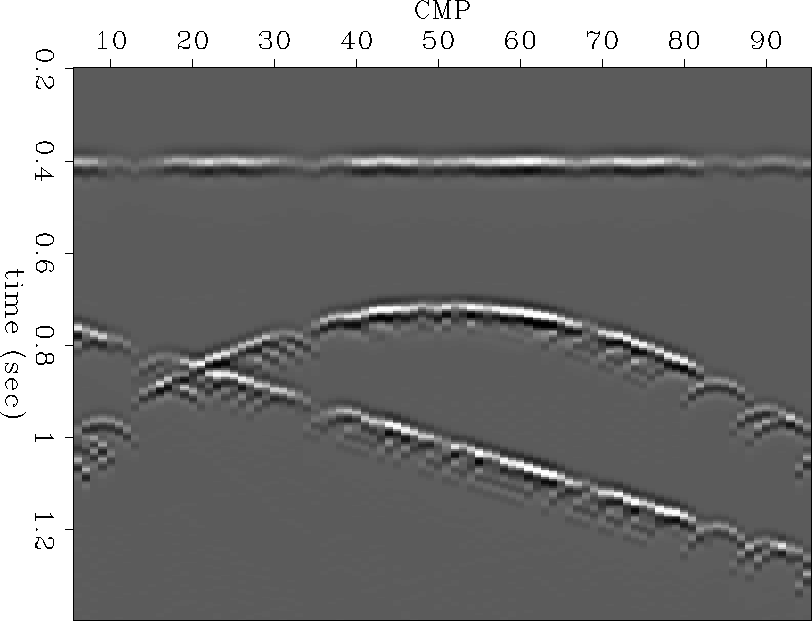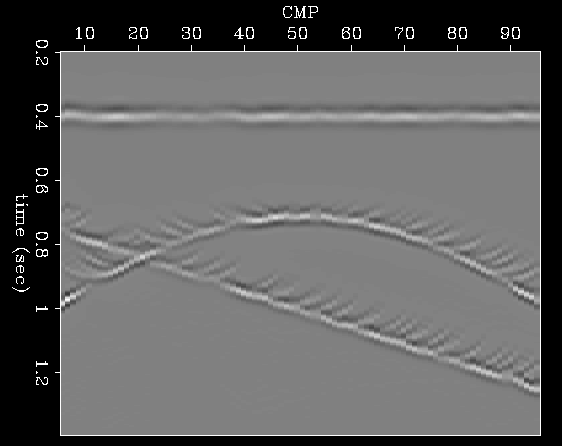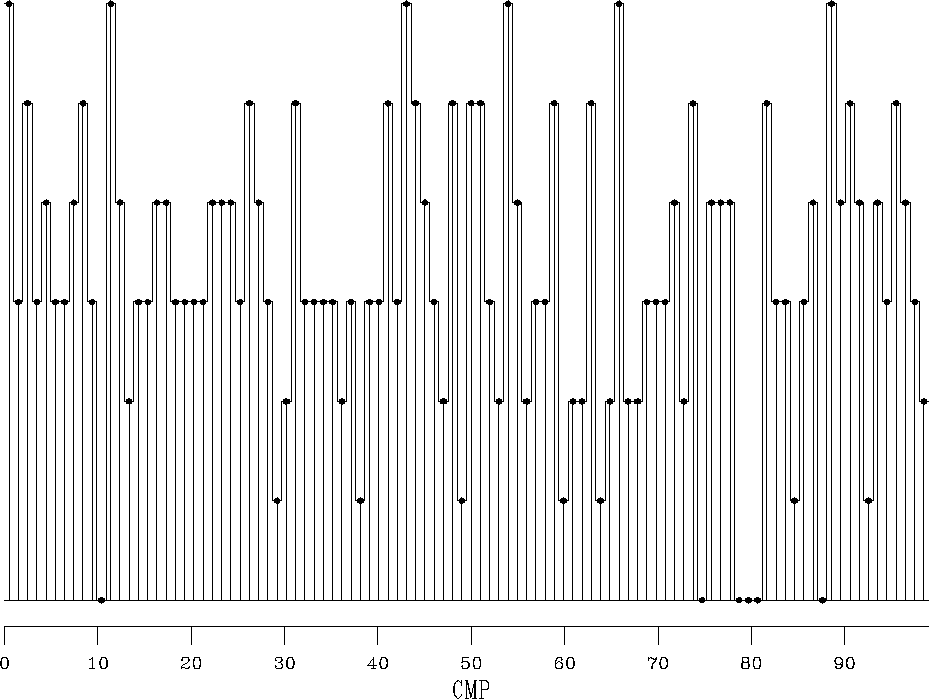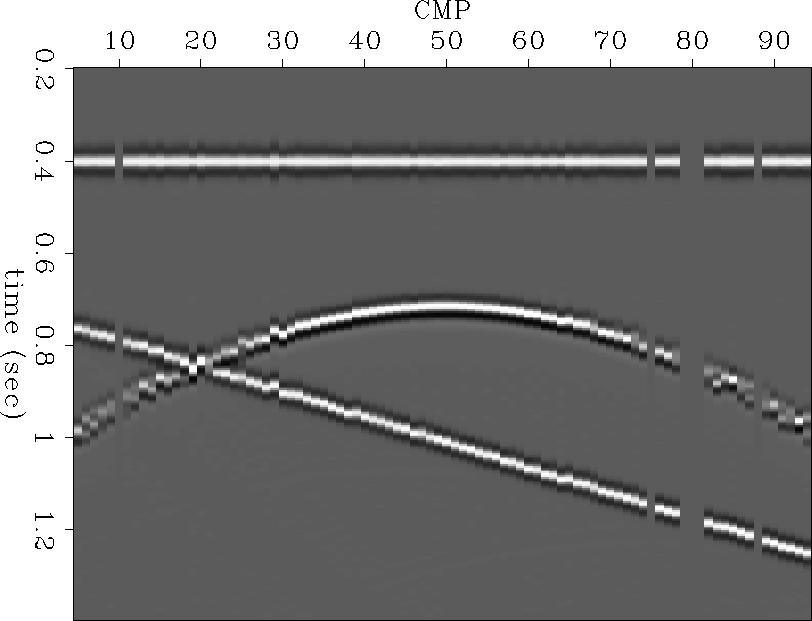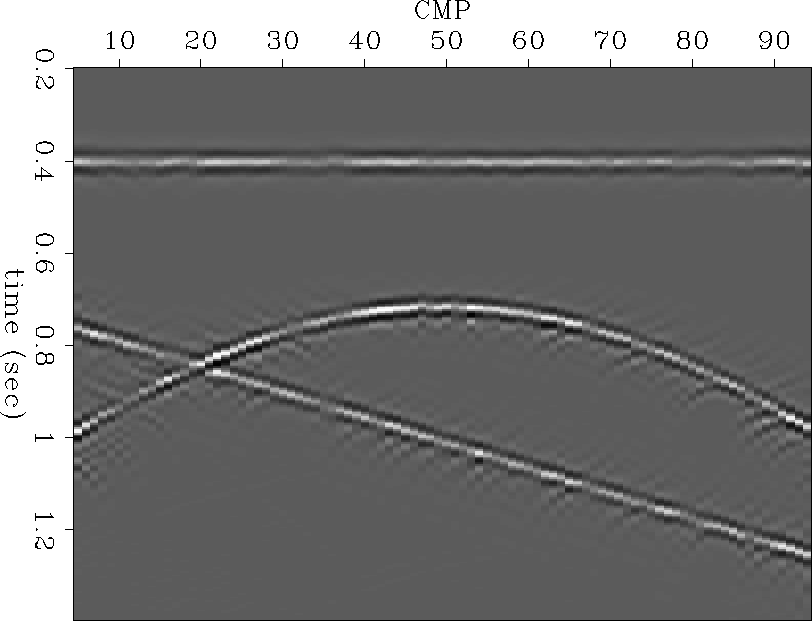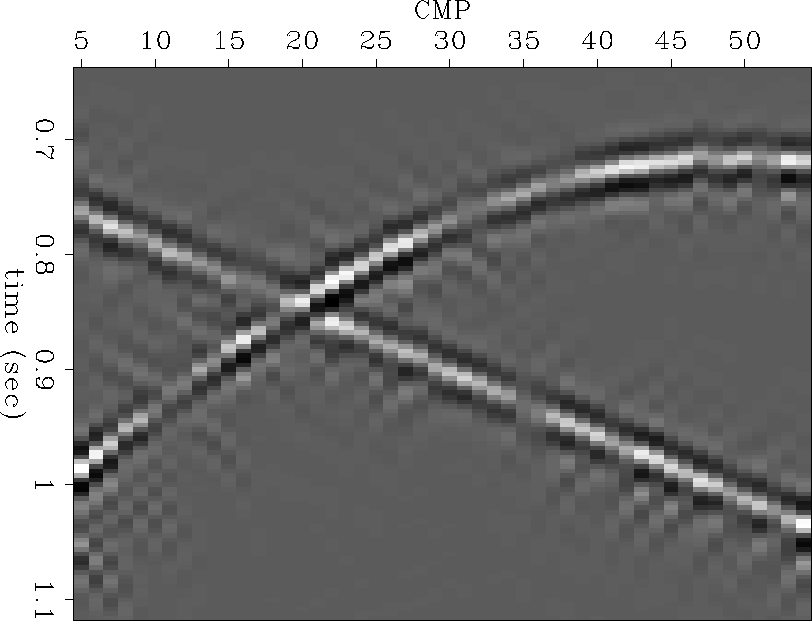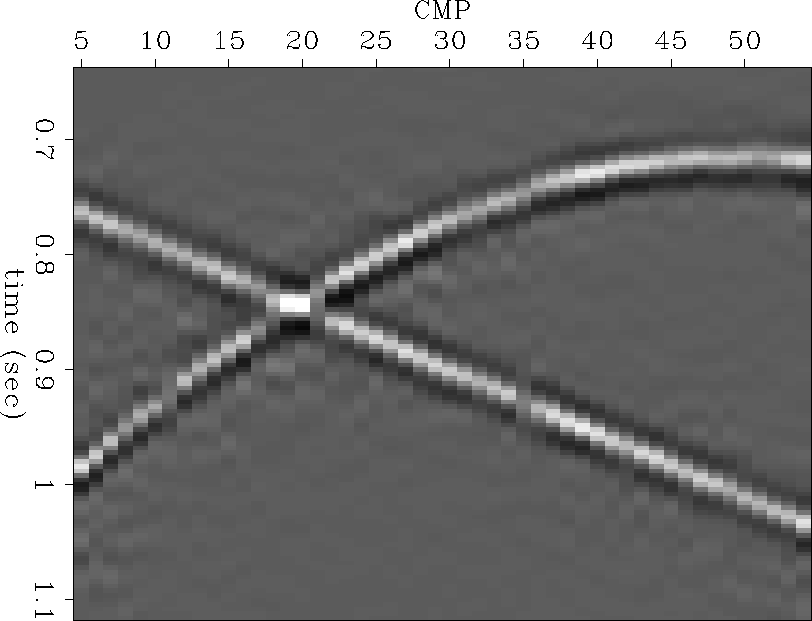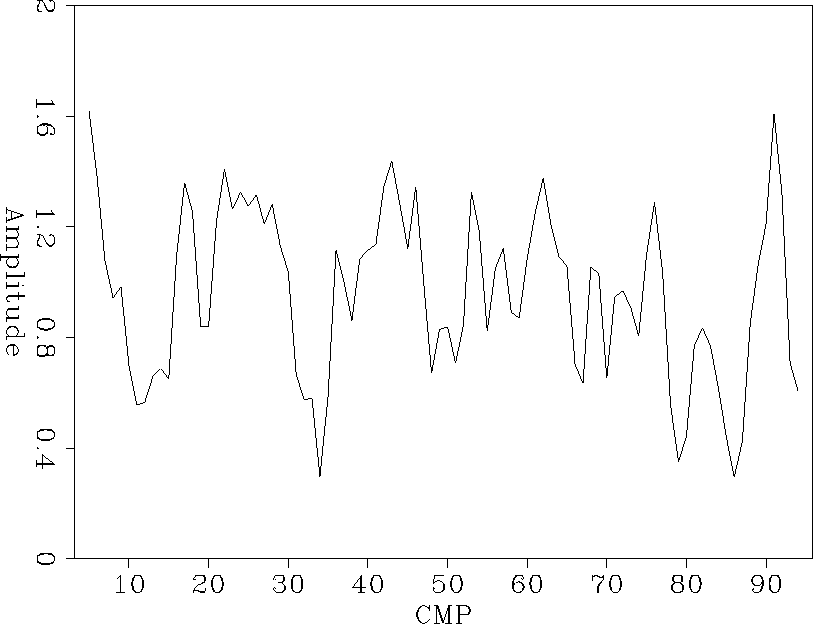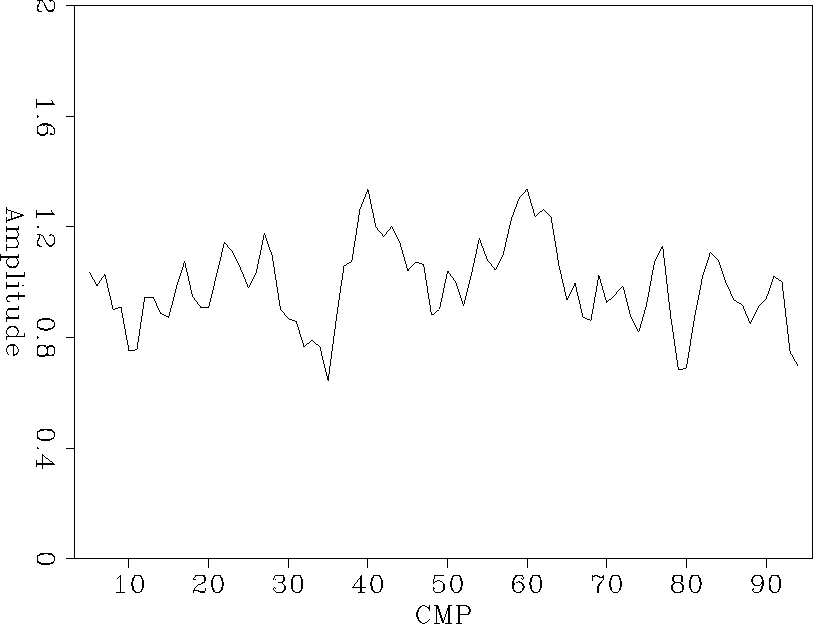




Next: REFERENCES
Up: Chemingui and Biondi: Handling
Previous: Synthetic results
We have presented a new technique to invert for reflectivity
models while properly handling the irregular sampling of seismic
data. The technique is based on the method of least
squares and consists of a two-step solution for imaging.
The data is equalized in a first stage with an inverse
filter and an imaging operator is then
applied to the preconditioned data to invert for a model.
The equalization filter corrects the imaging operator for the interdependencies
between data parameters. Each element of the filter is
a mapping between two data elements. It reconstructs a data trace
with given input geometry
at the geometry of the other data element.
The filter is therefore a symmetric AMO matrix with diagonal
elements being the identity
and the off-diagonal elements being the trace to trace AMO transforms.
We tested the effectiveness of the method in the 2D case for the application of
partial stacking by offset continuation.
The equalization step followed by imaging
has proved to correct and equalize the processing for
the effects of fold variations by properly handling the amplitude and phase
of the data.
input24
Figure 1 Irregularly sampled constant offset sections with 600 and 800m offsets.




 input68
input68
Figure 2 Irregularly sampled constant offset sections with 1000 and 1200m offsets




 amo-600
amo-600
Figure 3 Offset continuation of irregularly sampled constant-offset section from 600m to 850m.




 amo-1200
amo-1200
Figure 4 Offset continuation of irregularly sampled constant-offset section from 1200m to 850m.




 fold
fold
Figure 5 Fold distribution in the input data. The maximum fold is 7 and minimum is 0.




 nmo-stack
nmo-stack
Figure 6 Partial stack after NMO and normalization by the CMP fold in each bin.




 amo-stack
amo-stack
Figure 7 Partial stack after AMO to a common offset of 850m.




 equal-stack
equal-stack
Figure 8 Output of the two-step inversion at an effective offset of 850 meters.




 amo-stack-win
amo-stack-win
Figure 9 Window on the dipping events from the amo-stack result.




 equal-stack-win
equal-stack-win
Figure 10 Window on the dipping events from the two-step inversion.




 amp-amo
amp-amo
Figure 11 Peak amplitudes on the flat reflector from the amo-stack result.




 amp-norm
amp-norm
Figure 12 Peak amplitudes on the flat reflector from the two-step solution.










Next: REFERENCES
Up: Chemingui and Biondi: Handling
Previous: Synthetic results
Stanford Exploration Project
11/11/1997
